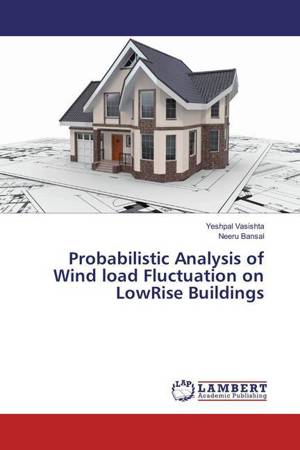
- Afhalen na 1 uur in een winkel met voorraad
- Gratis thuislevering in België vanaf € 30
- Ruim aanbod met 7 miljoen producten
- Afhalen na 1 uur in een winkel met voorraad
- Gratis thuislevering in België vanaf € 30
- Ruim aanbod met 7 miljoen producten
Zoeken
Probabilistic Analysis of Wind load Fluctuation on LowRise Buildings
Yeshpal Vasishta, Neeru Bansal
Paperback | Engels
€ 54,45
+ 108 punten
Omschrijving
Design wind Wind loading on low building has been an area of active investigation due to increasing public concern towards severe damage caused by windstorms in recent years. loading is mainly obtained from different codes, wherein the major source of information on which specifications are based is wind tunnel testing of scaled rigid models under simulated flow. Recent studies on full-scale/model-scale comparisons have brought out issues of flow simulations and measurement techniques with greater clarity, thus enabling improvements in existing information.Modeling of extreme value distribution has been used for deduction of design pressure coefficient. This is based upon generalized (3 parameter) Gumbel method. For this technique L-moment (Hosking 1990) has been used. Further design pressure coefficients for different zones of the building using extreme value distribution with central moments.
Specificaties
Betrokkenen
- Auteur(s):
- Uitgeverij:
Inhoud
- Aantal bladzijden:
- 92
- Taal:
- Engels
Eigenschappen
- Productcode (EAN):
- 9783659820366
- Verschijningsdatum:
- 11/01/2016
- Uitvoering:
- Paperback
- Afmetingen:
- 150 mm x 220 mm
- Gewicht:
- 145 g

Alleen bij Standaard Boekhandel
+ 108 punten op je klantenkaart van Standaard Boekhandel
Beoordelingen
We publiceren alleen reviews die voldoen aan de voorwaarden voor reviews. Bekijk onze voorwaarden voor reviews.











